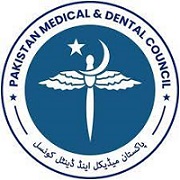GLOVES: DOS AND DON’TS
Abstract
Standard infection-prevention and control procedures must be in place during all healthcare contacts, regardless of whether a patient is known to be contagious or not, to stop the transmission of infection. As with all the items of personal protective equipment, the need for gloves must be subject to careful risk assessment of the task to be carried. Having decided that gloves should be used, a choice between sterile and non-sterile gloves must be made depending on the tasks undertaken.
Sterile gloves are worn to prevent the transmission of microorganisms from healthcare workers (HCWs) to patients. In addition, they also protect against blood and body fluids during surgical and aseptic procedures. The recommendation to wear sterile gloves includes all surgical interventions, vaginal delivery, Insertion of indwelling devices (IV line, urinary catheter, etc.), performing lumber punctures, giving epidurals, etc., invasive radiological procedures, preparing total parenteral nutrition and chemotherapeutic agents (1).
Non-sterile gloves are used to protect the HCWs from acquiring microorganisms from patients and contaminated environments, coming in direct contact with blood and body fluids by contact with non-intact skin or mucous membranes, e.g., vaginal examination, oral/dental care, emptying urine bags, suctioning of endotracheal tubes and by contact with the potential presence of infectious agents, e.g., MRSA both on intact and non-intact skin. Non-sterile gloves are also to be worn by contacting blood and body fluids indirectly by handling and cleaning contaminated items and equipment, handling clinical waste, and cleaning up spills of blood and body fluids (1).
However, misuse and carelessness while wearing gloves can lead to cross-contamination, and infection spread rather than infection prevention and control. Possible microbial transmission has been documented where used gloves were not removed or changed before performing care activities requiring asepsis, not changing gloves while moving from one patient to the other, taking care of multiple patients with the same pair of gloves, wearing layers of gloves and then removing the outer layer as they move from room to room (2).
Failure to change or remove contaminated gloves is also a significant cause of poor compliance with hand hygiene, creating a high risk of microbial transmission. Gloves are never meant to be worn in lieu of hand hygiene. Healthcare workers should wash their bare hands according to the World Health Organization's five moments of hand hygiene (3) Hand hygiene has to be followed strictly before donning and after the doffing of gloves. Gloves should only be worn in cases of the indications listed above. In some areas, HCWs are usually seen wearing gloves when there is no need. Besides contact precautions, gloves are not recommended while taking vitals, injecting intramuscularly and subcutaneously, giving oral medicines, vascular line manipulation in the absence of blood leakage, using the telephone, writing in patients’ charts, and moving patients’ furniture. Gloves should never be worn in the hallways or elevators, moving from one place to another within the hospital premises, or serving multiple patients. Gloves are not meant to be worn over and over or washed in between usage (4).
Adhering to hand hygiene and rationalizing the use and type of gloves in any healthcare setting can help prevent microbial contamination of the environment and for the safety of patients and HCWs from microorganisms.






